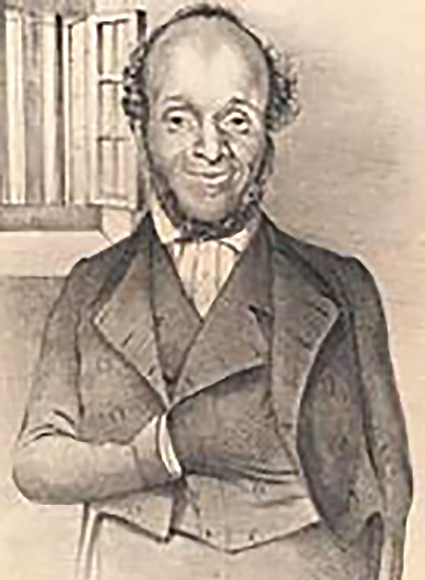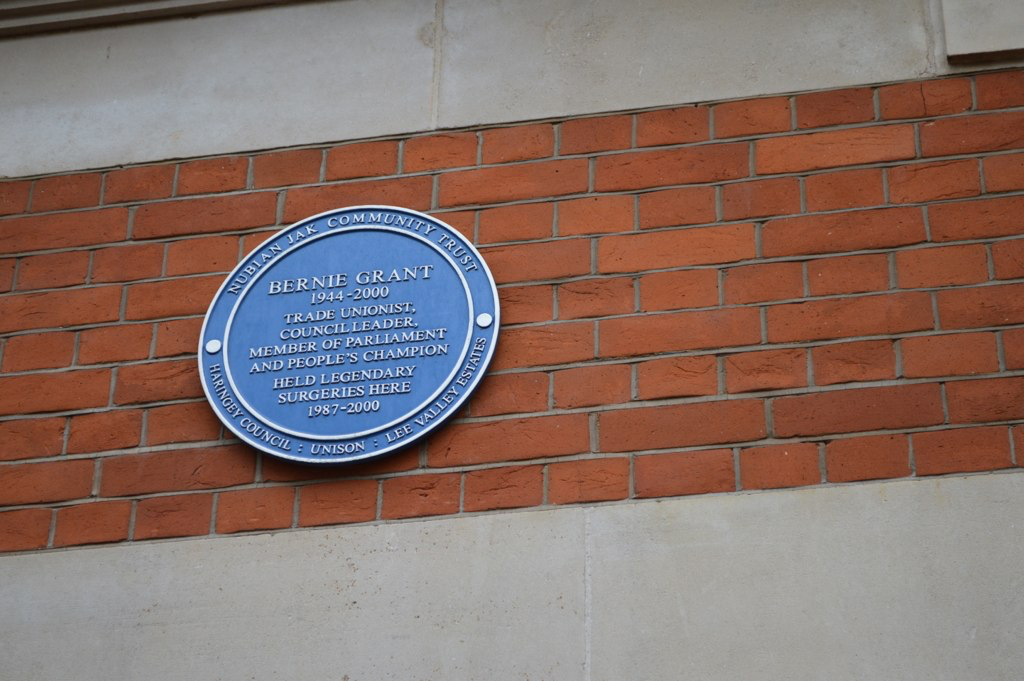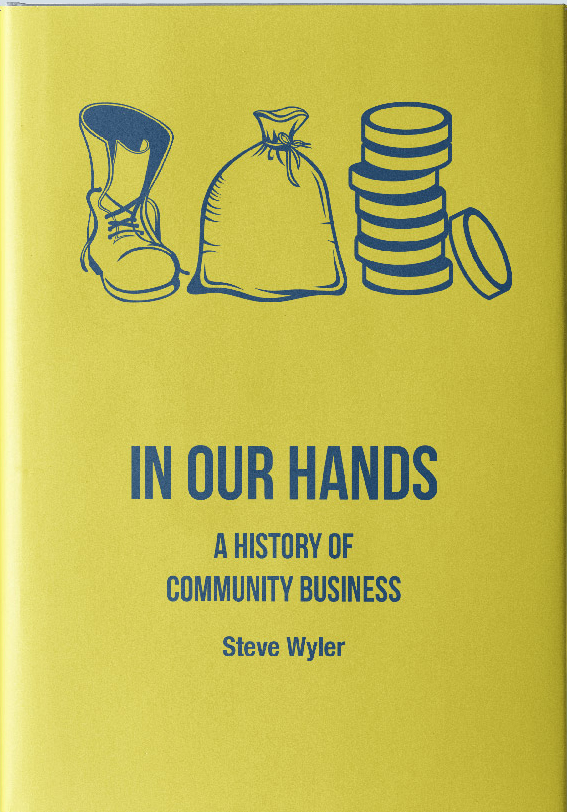Extract from In Our Hands: A History of Community Business by Steve Wyler
From the earliest phases of community business immigrants played a part, although their deeds were rarely awarded more than a footnote in the history books. The history of immigration is a history of aspiration, but also of a continual struggle against prejudice and discrimination. One response to the multiple social and economic barriers faced by immigrants was to develop solidarity and mutual aid within their own communities, and in this way they created the conditions for many forms of community business to flourish.
There has been a Jewish community in England since the time of the Norman conquest, often persecuted with violence or excluded from mainstream trades and forced into economic occupations on the edge of society. The need for mutual help and support in an often hostile climate led to many Jewish communities setting up friendly societies, which played an important role in the lives of Jewish immigrants from the late 19th century and for much of the 20th century.
The earliest recorded Jewish friendly society was The Tent of Righteousness Friendly Society. A notice reporting their 1902 annual general meeting at the Elephant and Castle Hotel expressed their pride in being the oldest Jewish friendly society, founded in 1812. Another early example was the United Brethren Benefit Society, first mentioned in the Jewish Chronicle in 1847. This was a typical example of a Friendly Society or ‘Chevra’ created by working class Jewish immigrants. Members would club together to save a few pennies a week from their modest incomes to put into their societies, and benefit would be paid back in times of hardship such as bereavement, unemployment, and illness. Unlike many other friendly societies, they also ran religious activities, study circles and instruction of young people. By 1901, there were 176 in London alone. Beatrice Potter (later Webb) described the Chevra in London’s East End as ‘self-creating, self-supporting, and self-governing communities’ although she also noted that they were culturally conservative and that women were strictly segregated.

In the early 19th century, among those advocating for community enterprise and ownership as an objective of social revolution were several pioneering African-Caribbean radicals. One was Robert Wedderburn, the son of a Jamaican slave, a follower of Thomas Spence, and a member of the Society of Spencean Philanthropists. In around 1810 Wedderburn opened a Unitarian chapel in Hopkins Street, Soho and government spies reported that he was making ‘violent, seditious, and bitterly anti-Christian Spencean speeches’. In 1817 Wedderburn wrote, ‘The earth cannot be justly the private property of individuals, because it was never manufactured by man; therefore whoever sold it, sold that which was not his own’. By 1819 up to 200 people were paying sixpence a head to attend debates and lectures “every Sabbath day on Theology, Morality, Natural Philosophy and Politics by a self-taught West Indian”.
Frustrated in their attempts to promote Spence’s plan through rational argument, the society turned to armed insurrection. In 1820 after the fiasco of the Cato Street conspiracy, its leaders, including another black radical, William Davidson, were executed. Wedderburn himself opposed the conspiracy, but only because he thought it was premature. Eventually he was charged with blasphemous libel. In court he asked the jury: “Where, after all, is my crime? It consists merely in having spoken in the same plain and homely language which Christ and his disciples uniformly used. There seems to be a conspiracy against the poor, to keep them in ignorance and superstition.” He was accused by the prosecution of being a “dangerous man’ with ‘considerable talents”. Found guilty he was sentenced to two years in Dorchester Prison. On his release Wedderburn continued to campaign for press freedom, against injustice, and for the ideas of Thomas Spence. In 1824 he published The Horrors of Slavery. In 1831, at the age of 68, he was arrested once more and sent to Giltspur Street Prison; four years later he died.
Another remarkable Black radical who played a part in the story of community business was William Cuffay, born in Kent in 1788, the son of a naval cook and a former slave. By occupation he was a journeyman tailor, and in 1842 he became president of the London Chartists. He was an energetic supporter of O’Connor’s Land Plan, and at the Chartists’ 1845 national convention he proposed “that the Conference now draw up a plan to enable the people to purchase land and place the surplus labourers who subscribe thereto on such land.”
Related: Tracing Jackson Mississippi’s fight for a future based on co-operation
In 1846 Cuffay was one of London’s three delegates to the land conference and, together with another tailor, James Knight, he was appointed auditor to the National Land Company which soon had 600 branches all over the country.

He received praise for the way in which he conducted this role: “When hundreds of working men elected this man to audit the accounts of their benefit society, they did so in the full belief of his trustworthiness, and he never gave them reason to repent of their choice. Cuffay’s sobriety and ever active spirit marked him for a very useful man; he cheerfully fulfilled the arduous duties devolved upon him.”
After the failure of the third Chartist petition Cuffay was accused of promoting an armed uprising, He was arrested, condemned to transportation, and died in poverty in a Tasmanian workhouse.
Britain began trading with China in the 17th century and a small community of Chinese sailors grew up around Limehouse in East London, expanding over the next two centuries, with Chinese communities also taking root in Liverpool, Swansea, Cardiff and elsewhere.
Chinese benevolent associations, the earliest of which was the Chee Kung Tong, formed in Liverpool in the 1880s, played an important role in looking after the interests of their members, arranging burials, and assisting in cases of exploitation. In the early 20th century the Chinese communities faced growing hostility, with crowds of angry British seamen, opposed to the cheaper Chinese crews, preventing Chinese seamen from signing on ships. New benefit associations were formed, including the Hui Tong Association, set up in 1906 or 1907 in Poplar and Liverpool. Its stated aims were to organise mutual aid, improve Chinese living standards in Britain, fight discrimination, overcome disunity, and adjudicate in disputes between members, although allegedly it also engaged in criminal activity.

In 1916 the Zhong Shan Mutual Aid Workers Club was established in Liverpool, later moving to East London, and offering a meeting place free from British ridicule and humiliation. It aimed to unite the overseas Chinese in Britain, to improve their working conditions and to look after their welfare. Eventually the Zhong Shan Mutual Aid Workers Club moved to Soho in the West End, showing films and arranging classes, and organising the Chinese New Year celebrations in Gerrard Street.
By 1930 there were over 30 Chinese shops and restaurants in Limehouse, including several tobacconists and lodging houses. Chinese restaurants and cafés were the main social hub of the local community, providing a venue in which to conduct business, and serving secondary functions as informal post offices and banks.
Related: Review, A Short History of Co-operation and Mutuality
Clan associations had been set up in the UK from the 1880s, with their roots in a particular family lineage or district of China, but from 1963 when there was large scale immigration from Hong Kong, these took on a bigger role. The Cheung Clansmen Charity Association dominated the Chinese restaurant sector, leading the way in the colonisation of Gerrard Street, and others including the Man and Pang clan associations also accumulated property and business interests.
Between 1955 and 1962 over 480,000 Commonwealth citizens came to live in Britain. Tighter immigration controls were then imposed, with an average of 75,000 immigrants per year in the 1960s and 72,000 per year in the 1970s, particularly from the West Indies, India, Pakistan and Bangladesh, as well as Asian refugees from East Africa in the 1960s and 1970s.

At first, housing conditions were grim, as immigrants had to live in Britain for three years before being allowed to join a waiting list for local authority housing. During this time, as indeed in the decades to follow, immigrants were often forced to endure slum conditions in badly maintained private rented accommodation owned by rogue landlords. From 1955, however, housing associations were set up to help immigrants. The first were in Leeds, followed by Birmingham, Nottingham and London.
In the late 1980s, following riots in Brixton, Toxteth and elsewhere, some 40 housing associations led by people from black and ethnic minority communities were established with funding support from government, with the aim of providing affordable housing for African-Caribbean, Vietnamese, Chinese and Asian populations, and thereby addressing social inequality.
Some of these associations grew rapidly. In 1979 The Asra Project (meaning shelter in Hindi and Urdu) grew out of Family First in Nottinghamshire, in response to incidences of elderly Asians becoming homeless, living in isolated conditions and suffering from physical and verbal harassment. With the assistance of Leicester Housing Association, the project later became Asra Midlands Housing Association, and in 1984 a sister association was set up in London. Asra grew from under 100 homes at the end of the 1980s to nearly 2,000 a decade later and now has 14,000 homes.
Steve Douglas, who ran Asra in the 1980s, and who later became chief executive of the Housing Corporation, looked back on those years: “There was a real energy there – there were people who had been disadvantaged, who were young and bright and were dissatisfied with the status quo and who had ideas actually articulating those, having them listened to and being given some level of authority.”
But growth brought its own problems. The increasing scale of public and private investment into the housing association movement came at a price. Across the whole housing association sector, public bodies imposed an increased burden of regulation and restrictive design specifications, and the associations lost control of housing referrals, making it impossible to establish balanced communities, and yet more sink estates were produced.
At the same time, the requirement for private as well as public investment, and growing professionalisation of the sector, led to acquisitions and mergers, and the creation of a powerful group of very large housing associations, which had little if any community identity or allegiance. Indeed, some became aggressive and predatory businesses, in effect stripping wealth from one community in order to finance expansion into the next. Although there were sporadic attempts to stimulate a ‘housing plus’ agenda, in order to encourage social and economic development activities for residents and for the wider community, these were at best a sideline as far as large developers were concerned, who became ever more seduced by the potential to build housing for sale in the private market, and ran their operations as increasingly commercialised businesses.
The effect of this was to marginalise and undermine many community-led housing associations. Some were forced into mergers, and others closed because of lack of investment or internal mismanagement. Black and ethnic minority-led housing associations were hit especially hard: the doors to public investment started to close, and failures and frauds in a few were given the highest possible profile, tainting by implication the entire movement. Many were absorbed into group structures which subsequently wound them down, assimilating their housing and removing their unique identity.

Yet a few managed to thrive, either within their new groups, like Ashram which has become Ashram Moseley within the Accord Group, or independently. In total around 70 black and ethnic minority-led independent housing organisations have survived.
While most are small, managing less than 1,000 homes, they provided 65,000 homes in total in 2016, with an estimated annual turnover of £600m and controlling assets valued at around £1.8bn. It is estimated that they invest some £150m yearly in their local communities, through local procurement, as well as neighbourhood facilities, skills and employment projects, wellbeing activities, community safety, and environmental schemes.
Over the years successive generations of immigrant communities have brought with them their own models of mutual aid. For example, lending circles are found around the world, wherever poor people exist, systems of state welfare are inadequate, and access to formal banking is out of reach. Examples include the ‘stokvel’ model in South Africa, where groups of 12 or more people contribute periodically to a shared fund, and in each period the total contributions are disbursed to one of the members, by rotation. Operating on trust, and with no one making profit or charging interest, this has become highly popular and it is estimated that there are now 800,000 stokvels in existence, with one in every two black adults in South Africa in membership. In the UK, similar schemes have been brought over by successive waves of migrants. They operate under many different names, ‘pardner’ within Caribbean communities, ‘ayuuto’ or ‘hagbad’ in Somali communities, ‘sou sou’ in other East African communities, ‘committee’ in Indian communities, and so on. These help to maintain the culture and practice of mutual aid, and in some cases become the platform for wider social initiative, for example when the members of the lending circle decide to set aside one of the periodic ‘hands’ or withdrawals for a charitable purpose.
Within immigrant communities, the distinction between private and social business has often been blurred. Trade and enterprise has always been a means to grow both private and community prosperity, to build a better life for a widening network of family, friends and neighbours. Enterprises established by such communities were typically characterised by a combination of self-help and self-organisation, mutual support within existing communities and for new arrivals, and activities intended to challenge or ameliorate discrimination. In some cases the enterprises were also a vehicle for building a community of faith. Much of this remains the case today.
In 2002 ex-banker Eric Samuel began buying produce from Spitalfields food market, loading it into his van and taking it to local estates. Community Food Enterprise now operates across some of the poorest neighbourhoods in East London, with breakfast clubs at schools, lunch clubs for the over-50s and juice bars at local events, and a mobile food store which travels to the estates. It also runs cook-and-eat sessions, with courses offering nutrition, cookery and business skills.
In 1990 Jawaahir Daahir, a lecturer and radio broadcaster fled civil unrest in Mogadishu in Somalia and moved to Holland. Ten years later, she brought her children to Leicester, and established Somali Development Services to support the Somali community in the city and Somali women in particular. It provides drop-in advice sessions and help with education, employment, health, housing and family support. There is also a homework club, English and IT classes and a youth outreach programme.
PJ’s Community Services was established in 1992 as a family-run business headed by husband and wife team Patrick and Claudine Reid, which now employs 20 staff and offers services to Black, Asian and Minority Ethnic communities, with a focus on fitness, faith, family, and finance. It operates from a multi-purpose centre in Croydon, south London, with music recording studios, a children’s day nursery, office space and meeting rooms, and also offers home care, a health and social care recruitment agency, and business development support. In 2008 Claudine Reid was voted one of Britain’s Top 100 ‘Most Entrepreneurial Women’ by Real Business Magazine.

The Selby Trust in Tottenham was set up in 1992, supported by local MP Bernie Grant, who had a vision for a place in the community that people could afford and call their own. It took over a redundant school on a lease from the local council, creating a multi-purpose community and social enterprise centre, with offices rented out to small businesses and charities, alongside meeting rooms, training facilities, and sports and events halls. Almost 80% of Selby Trust funding is now self-generated. It is located in an area of considerable deprivation, and brings together a rich mix of individuals and organisations, primarily from black, ethnic minority, refugee and other historically excluded communities in Tottenham and beyond, and is run by people from these communities. As its chief executive Sona Mahtani said: “We transformed a 1960s shell into a thriving hub that shows what a poor community can do for volunteering, self-help, jobs and social enterprise.” The motto of the Selby Trust is “many cultures, one community”.
In 2017 research by Britain Thinks for Power to Change revealed that the appetite for involvement in community businesses among people from ethnic minority communities was higher (20%) than among the white population (12%). A reflection perhaps of the long tradition of mutual aid, enterprise, and community building among immigrant communities in this country.

The story of community business demonstrates enthusiastic support from unlikely places, from radicals and conservatives, from the very poorest in society and from the very richest. It helps to realise that the strength and endurance of the community business movement is not simply about breadth
and scale in the here and now, but the depth and scale in the past.
And looking back into the history of community business turns out to be a way to help look forward with greater confidence and hopefulness for the community business movement in the future.
- This article is based on an extract from ‘In Our Hands’ by Steve Wyler, which looks the many-threaded and sometimes tangled history of community business.
Steve Wyler is an independent consultant and writer in the social sector. From 2000 to 2014 Steve was chief executive of Locality and (previously) the Development Trusts Association, building a network of community businesses dedicated to community enterprise, community ownership, and social change. Steve has been a member of government advisory groups on localism, social enterprise, and the third sector. To find out more and to purchase the book, visit: historyofcommunitybusiness.co.uk

